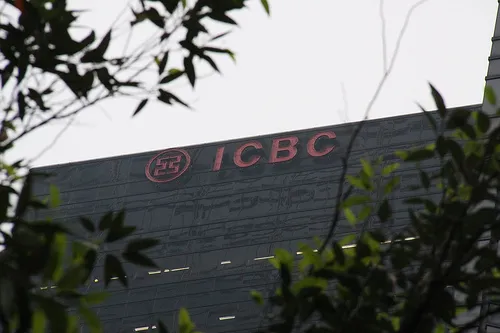
A review of the Chinese banking landscape in 2012
Small banks outperformed their large cap peers in December.
According to Bernstein Research, in December, 8 of the 9 H-share listed Chinese banks outperformed the regional market as represented by the MSCI Asia-Pacific ex-Japan Index (MXAPJ). The weighted average performance of the banks in December was +7.6%, well above the +3.1% and +2.8% performance of the MXAPJ and Hang Seng Index, respectively.
Here's more from Bernstein:
During the month the small banks outperformed their large cap peers (+16.0% vs. +6.5%) reversing the recent trend of outperformance among the large banks. Chongqing Rural Commercial Bank was the top performing H-share bank in December (+19.1%). Among the Big 4 banks, AgBank was the top performer as its shares increased by 12.6% while the other 3 banks saw 5-6% improvements.
The Chinese banks' outperformance in December was driven by the announcement made early in the month by the regulator that the Basel III timeline for capital requirements would be more generous than previously expected. As a result, the banks with weaker capital bases (generally the small banks and AgBank) showed the strongest upside.
The central bank continued its moderately accommodative monetary stance in December. It injected RMB 95 billion of liquidity into the banking system via open market operations during the month. That said, last month marked the first time since the previous December that the PBOC did not auction MoF deposits into the banking system.
Overnight SHIBOR rates remained low throughout the month but spiked in the final days of the year due to the seasonal year-end window dressing of the balance sheets at financial institutions.
On the FX front, the RMB depreciated slightly against the US$ in December, falling by 0.1%. This marked the first monthly depreciation of the RMB vs. the US$ since July. For the full-year 2012, the RMB appreciated by 1.0% against the US$.
The RMB depreciated by 1.4% against the Euro in December and was down by 1.0% for full-year 2012. The declining RMB against the Euro should provide some tailwinds to China's manufacturing industry as Europe is the largest importer of Chinese goods.
The A-share equity markets were remarkably strong in December. The major Shanghai and Shenzhen indices rose by 15-17% during the month, sharply outperforming the Hang Seng Index (+3%). Despite the December outperformance (which marked the strongest monthly performance in more than 3.5 years), the Chinese equity markets still underperformed the Hang Seng Index and the regional MSCI Asia-Pacific ex-Japan Index in full-year 2012. For the full year, the Shanghai and Shenzhen Composites were up 3-6% while the Hang Seng reported 23% upside and the MSCI Asia-Pacific ex-Japan Index rose 19%.
The strong A-share equity performance drove the 34% upside at the Chinese brokers in the month of December. Meanwhile, with higher exposure to the equity markets, the insurers outperformed the banks by nearly 300bp in December.
Outlook – Despite the fact that small banks have outperformed the large banks in December, we continue to prefer the large banks due to a difference in the underlying fundamentals of these two groups.
We expect investors to reward the larger banks for the stronger NIMs and the better credit quality metrics we expect the large banks to report over the coming 9-12 months. That said, the higher beta trade that has been benefitting the small banks could continue until March/April when the banks report their Q4:12/Q1:13 results.
We prefer CCB, ICBC and BOC (rated Outperform) to China Merchants Bank (rated Underperform).




![Lorem Ipsum [ABF 1]](https://cmg-qa.s3.ap-southeast-1.amazonaws.com/s3fs-public/styles/exclusive_featured_article/public/2025-03/a_hand_pointing_to_a_futuristic_technology_5b87c9d0e3_1.png.webp?itok=2w0y1WhS)


![Cross Domain [Manu + SBR + ABF + ABR + FMCG + HBR + ]](https://cmg-qa.s3.ap-southeast-1.amazonaws.com/s3fs-public/styles/exclusive_featured_article/public/2025-01/earth-3537401_1920_4.jpg.webp?itok=WaRpTJwE)







 Advertise
Advertise

